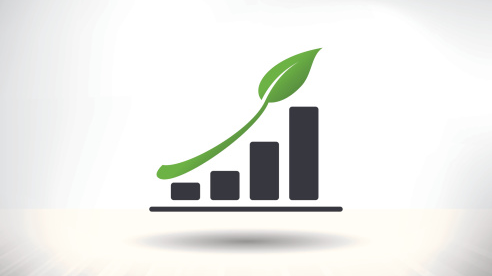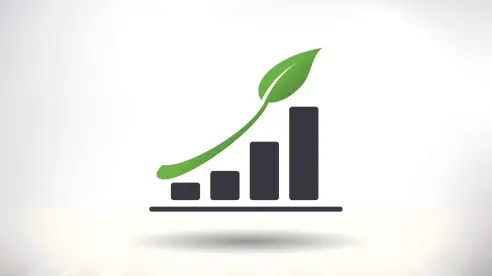
Even in countries that have stated their intention to address both environmental destruction and inequality, rescue packages are dominated by spending that supports unsustainable pre-pandemic economic activities. /Getty
Editor's note: Maxwell Gomera, resident representative of the United Nations Development Program in Rwanda, is a senior fellow of Aspen New Voices. The article reflects the author's opinions and not necessarily the views of CGTN.
As many as150 million peopleglobally, roughly the combined population of Canada, France and the United Kingdom, may have fallen into pandemic-induced extreme poverty over the past year. Partly as a result, governments are currently pumping unprecedented amounts of money into their COVID-19 response, spending over$14.6 trillionon rescue and stimulus measures in 2020 alone.
But a recent report by the United Nations Environment Program and the University of Oxford indicates thatonly 18 percentof current recovery investments can be considered "green." That's a problem.
As governments prime the pumps of economic recovery, they must change the yardsticks by which they measure human progress and welfare. Otherwise, their investments risk further fueling the inequalities and environmental destruction thatprepared the groundfor the COVID-19 pandemic.
Environmentaldegradationandincreasing contactbetween wildlife and humans enabled SARS-CoV-2, the virus that causes COVID-19, tojump from animals to humans. And the conditions the virus encountered – shaped byvast social inequities– enabled it to erupt into a pandemic with devastating health, social and economic consequences.
Even in countries that havestated their intentionto address both environmental destruction and inequality, rescue packages aredominated by spendingthat supports unsustainable pre-pandemic economic activities. These misguided investments reinforce the conditions that got us here in the first place.
For example, countries such asIndia,Canada and South Africa have set aside funding for green recoveries, but are simultaneously propping up their fossil fuel industries.
South Africa hasearmarked $3.5 billionof investment in three new energy projects that will ostensibly "reduce the use of diesel-based peaking electrical generators." But the state-owned electric utility, Eskom, previously built the world's third- and fourth-largest coal-fired power plants. The industrial region around Middelburg, with a population of 4.7 million, includes 12 coal-fired power plants and a huge refinery that produces liquid petroleum from coal. This facilitygeneratesmore greenhouse gas emissions annually than entire countries such as Norway and Portugal. Respiratory diseases in the region likely cause more than300 premature deaths per year.
Other unsustainable activities – such as destroying forests, plowing and paving grasslands and polluting fresh water – continue unabated. These natural resourcessustainbillions of people. Theyaccountfor 47 percentof the rural poor's household incomes in India, nearly 75 percent in Indonesia, and 89 percent in Brazil's northern Amazon. Over70 percent of people in Sub-Saharan Africadependon forests and woodlands for their livelihoods.

As governments prime the pumps of economic recovery, they must change the yardsticks by which they measure human progress and welfare. /Getty
To correct our course, we must change the way we measure human development and social progress. Without the right signposts, we will be unable to achieve the transformation our economies and societies must undergo to ensure our survival. National GDP, the most widely used economic development measure, isuseful and provides a great deal of information closely related to human welfare. But it offersno guidanceregarding how to avoid unsustainable and unequal outcomes.
Fortunately, as countries plan their post-pandemic recovery expenditures, they can consider a new tool: thePlanetary-Pressures Adjusted Human Development Index(PHDI) developed by the United Nations Development Program (UNDP) and its partners.
The PHDI is a gauge of human progress that accounts for poverty, inequality and planetary strains. It measures not only a country's health, education and living standards, but also its carbon dioxide emissions and material footprint. The resulting index gives policymakers an indication of how development priorities would change if the well-being of both peopleandthe planet were central to defining humanity's progress.
Using this approach, more than50 countries drop outof the very high human development group based on UNDP's standard Human Development Index, while countries like Costa Rica, Moldova and Panama rise at least 30 places. Planning that conserves nature would improve the well-being of billions of people.
Some might argue that GDP is a well-established universal yardstick and that the PHDI is too complicated for countries facing urgent and competing development priorities. But the new index enables us to identify and measure the sustainability problem and offers a clear alternative to relying on one main indicator – GDP – as a gauge of a country's progress.
Without a different approach, we risk inviting the next pandemic by widening inequities and deepening the environmental crisis. The two go hand in hand. And when disaster ultimately strikes, the best we can hope for will be timely humanitarian relief.
Instead, governments should adopt new measures to address the environmental crisis and growing inequality, and make these part of a longer-term strategy that begins now. By measuring what matters, governments will be able to deliver recovery plans that strengthen green stewardship and reduce inequities, improving the prospects for a healthier and more prosperous future for all.
**Copyright: **
Project Syndicate
, 2021
(If you want to contribute and have specific expertise, please contact us at [email protected].)
 简体中文
简体中文

